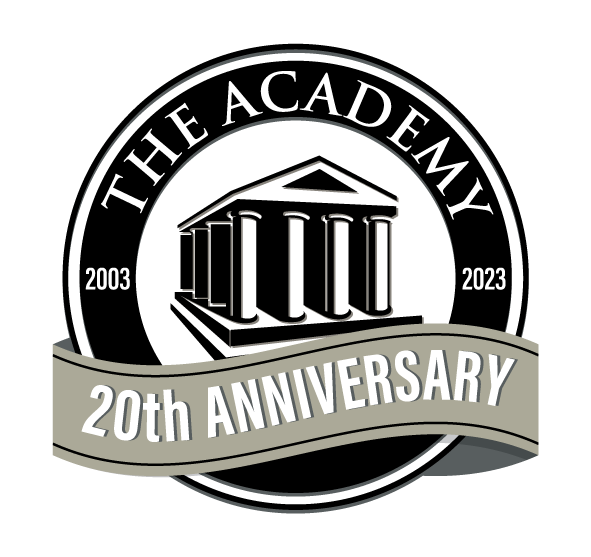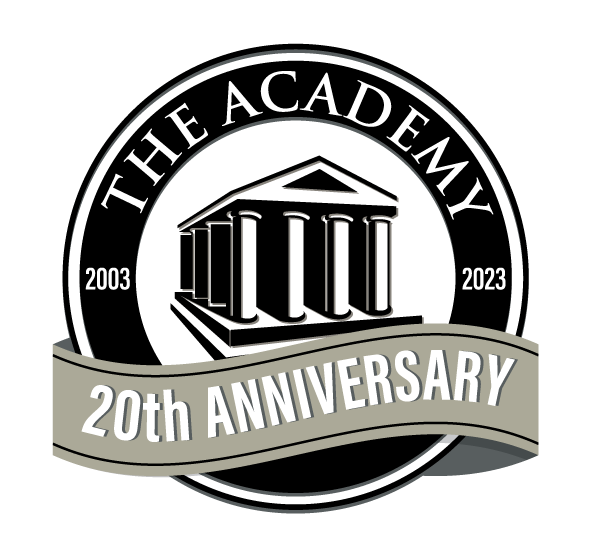Description
This five-day course will teach you how to plan, configure, and manage the advanced features in a SharePoint 2016 environment. The special areas of focus for this course include implementing high availability, disaster recovery, service application architecture, and Microsoft Business Connectivity Services. This course also focuses on social computing features, productivity, and collaboration platforms and features. Students also will learn about business intelligence solutions, Enterprise Content Management, web content management infrastructure, solutions, and apps. This course also covers how to develop and implement a governance plan, and how to perform an upgrade or a migration to SharePoint 2016.
This is the second in a sequence of two courses for IT Professionals and is aligned with the SharePoint 2016 IT Pro certification.
Prerequisites
An ideal candidate for this course must have at least one year of experience with deploying and administering multiple SharePoint Server 2013 farms across a large enterprise. The candidate should have completed Course 20339-1A: Planning and Administering Microsoft SharePoint 2016, or should demonstrate equivalent skills
Before attending this course, students must demonstrate the following skills:
At least a one-year experience of mapping business requirements to both logical and physical technical designs.
Working knowledge of network design, including network security.
Software management experience in a Windows Server 2012 R2 enterprise server or Windows Server 2016 environment.
Deploying and managing applications natively, virtually, and in the cloud.
Administering IIS.
Configuring AD DS for use in authentication and authorization, and as a user store.
Managing an application remotely by using Windows PowerShell 2.0 or later.
Connecting applications to SQL Server.
Implementing claims-based security.
What’s included?
- Authorized Courseware
- Intensive Hands on Skills Development with an Experienced Subject Matter Expert
- Hands-on practice on real Servers and extended lab support 1.800.482.3172
- Examination Vouchers & Onsite Certification Testing- (excluding Adobe and PMP Boot Camps)
- Academy Code of Honor: Test Pass Guarantee
- Optional: Package for Hotel Accommodations, Lunch and Transportation
Training Solutions
With several convenient training delivery methods offered, The Academy makes getting the training you need easy. Whether you prefer to learn in a classroom or an online live learning virtual environment, training videos hosted online, and private group classes hosted at your site. We offer expert instruction to individuals, government agencies, non-profits, and corporations. Our live classes, on-sites, and online training videos all feature certified instructors who teach a detailed curriculum and share their expertise and insights with trainees. No matter how you prefer to receive the training, you can count on The Academy for an engaging and effective learning experience.
Methods
- Instructor-Led (the best training format we offer)
- Live Online Classroom – Online Instructor-Led
- Self-Paced Video
Speak to an Admissions Representative for complete details
| Start | Finish | Public Price | Public Enroll | Private Price | Private Enroll |
|---|---|---|---|---|---|
| 5/12/2025 | 5/16/2025 | ||||
| 6/2/2025 | 6/6/2025 | ||||
| 6/23/2025 | 6/27/2025 | ||||
| 7/14/2025 | 7/18/2025 | ||||
| 8/4/2025 | 8/8/2025 | ||||
| 8/25/2025 | 8/29/2025 | ||||
| 9/15/2025 | 9/19/2025 | ||||
| 10/6/2025 | 10/10/2025 | ||||
| 10/27/2025 | 10/31/2025 | ||||
| 11/17/2025 | 11/21/2025 | ||||
| 12/8/2025 | 12/12/2025 | ||||
| 12/29/2025 | 1/2/2026 |
Curriculum
Module 1: Introduction to SharePoint 2016
This module describes the core architectural components of a SharePoint Server environment and identifies the key new features and changes in SharePoint 2016.
Lessons
The core SharePoint 2016 architecture
New features in SharePoint 2016
Lab: Reviewing Core Microsoft SharePoint concepts
Configuring SharePoint 2016 farms by using Windows PowerShell
Provisioning service applications by using Windows PowerShell
Module 2: Introduction to hybrid scenarios for SharePoint 2016
This module describes the key hybrid features in SharePoint 2016, and the various hybrid options available in SharePoint 2016. This module helps you understand how to configure a solution that uses an outbound search topology.
Lessons
Exploring the hybrid features in SharePoint 2016
Hybrid architectures in SharePoint 2016
Configuring a one-way hybrid search, and configuring OneDrive for Business
Lab: Configuring a Microsoft Office 365 tenant
Configuring an Office 365 tenant
Lab: Configuring one-way hybrid search and configuring OneDrive for Business
Configuring an outbound search topology
Module 3: Planning and designing for business continuity management
This module explains how to select an appropriate database server configuration to meet availability requirements. It also describes how to design physical architecture and infrastructure to meet high-availability requirements. Finally, this module explains how to develop and implement a backup and restore strategy.
Lessons
Designing database topologies for high availability and disaster recovery
Designing a SharePoint 2016 infrastructure for high availability
Planning for disaster recovery
Lab: Planning for high availability
Planning a Microsoft SQL Server topology & designing SharePoint infrastructure for high availability
Developing a high-availability physical architecture design diagram
Lab: Designing a backup and restore plan, and performing a backup and a restore
Creating a backup and restore plan
Testing the backup and recovery process
Module 4: Planning and implementing Business Connectivity Services and Secure Store Service
This module explains how to configure Business Connectivity Services (BCS), and describes how to configure and manage the Secure Store Service application. It also explains how you can configure and manage BCS models.
Lessons
Configuring BCS
Configuring the Secure Store Service
Managing BCS models
Lab: Configuring Business Connectivity Services and the Secure Store Service
Configuring the Business Data Connectivity service application
Configuring the Secure Store Service
Lab: Managing Business Data Connectivity models
Importing and configuring Business Data Connectivity (BDC) models
Configuring a Secure Store Service target application
Creating profile pages for BDC models
Module 5: Configuring productivity services for a SharePoint 2016 deployment
This module describes SharePoint apps and the supporting SharePoint infrastructure. This module also explains how to provision and configure SharePoint apps and app catalogs, and how to manage app usage within a SharePoint 2016 deployment. Additionally, this module describes how to provision Microsoft Access Services, Visio Services, Word Automation Services, PowerPoint Automation Services, and SharePoint Translation Services.
Lessons
Understanding the SharePoint app architecture
Provisioning and configuring apps and app catalogs
Managing apps
Provisioning productivity services
Lab: Configuring and managing SharePoint apps and app catalogs
Configuring a SharePoint farm to support apps
Creating and configuring a corporate catalog
Deploying and monitoring apps
Module 6: Managing solutions in a SharePoint 2016 deployment
This module describes the purpose and structure of SharePoint features and solutions. In addition, it explains how to manage farm solutions in a SharePoint 2016 deployment, and how to manage sandbox solutions in a SharePoint 2016 deployment.
Lessons
Understanding the SharePoint solution architecture
Managing farm solutions
Managing sandboxed solutions
Lab: Managing SharePoint 2016 solutions
Configuring sandboxed solution management at the farm level
Configuring sandboxed solution management at the site collection level
Deploying farm solutions
Module 7: Connecting people
This module explains how to implement user-profiles and configure synchronization for a SharePoint 2016 deployment, and how to plan and configure My Site and social features. This module also describes how to configure community sites.
Lessons
Planning user profiles
Enabling My Sites and social features
Building communities
Lab: Configuring profile synchronization and My Sites
Configuring user profile synchronization by using Microsoft Identity Manager 2016
Configuring user profile policies
Configuring My Sites
Lab: Configuring community sites
Creating a community site infrastructure
Configuring community site participation
Module 8: Planning and configuring web content management
This module explains how to plan and configure a web content management infrastructure to meet business requirements. This module also describes how to configure managed navigation and product catalog sites, and how to configure support for multilingual sites. Additionally, it explains and how to plan and manage design and customization for publishing sites, and how to plan and configure support for mobile users.
Lessons
Planning and implementing a web content management infrastructure
Configuring managed navigation and catalog sites
Supporting multiple languages and locales
Planning and managing design and customization
Supporting mobile users
Lab: Configuring managed navigation and catalog sites
Configuring a catalog site
Configuring a publishing site to use catalog content
Lab: Configuring device channels
Configuring device channels
Module 9: Planning and configuring Enterprise Content Management
This module explains how to plan for the management of content and documents, and how to plan for and configure eDiscovery. Additionally, it describes how to plan for records management and compliance.
Lessons
Planning content management
Planning and configuring eDiscovery
Planning records management
Lab: Configuring eDiscovery in SharePoint 2016
Creating an eDiscovery center
Creating and managing eDiscovery cases
Configuring in-place preservation
Lab: Configuring records management in SharePoint 2016
Creating site-based retention policies
Module 10: Planning and configuring business intelligence solutions
This module explains how to plan a business intelligence (BI) architecture for a SharePoint 2016 deployment, and how to deploy and manage BI services.
Lessons
Planning a business intelligence architecture
Deploying and managing business intelligence services
Lab: Configuring PowerPivot for SharePoint 2016
Installing and configuring the PowerPivot add-in
Verifying the PowerPivot for SharePoint functionality
Module 11: Planning and configuring work management and productivity
This module explains how to configure connections to enterprise server platforms, and how to plan and configure productivity and collaboration features. This module also explains how to plan and configure composite solutions in SharePoint 2016.
Lessons
Aggregating tasks with the Work Management Service
Planning and configuring collaboration features
Planning and configuring composites
Lab: Configuring project sites
Creating project sites
Configuring project sites
Engaging project teams
Configuring Project Server integration
Lab: Configuring a workflow
Configure Microsoft Azure Workflow and Microsoft SharePoint Workflow Services
Creating and testing a workflow
Module 12: Upgrading and migrating to SharePoint 2016
This module explains how to plan an upgrade or migration to SharePoint 2016. In addition, it explains how to manage site collections are how to upgrade them to SharePoint 2016. Finally, the module describes how to upgrade advanced content from SharePoint Server 2013 to SharePoint 2016.
Lessons
Preparing for an upgrade or migration
Planning an upgrade process
Planning and managing a site collection upgrade
Upgrading for advanced scenarios
Lab: Performing a content database migration and upgrade from Microsoft SharePoint Server 2013
Migrating a content database from SharePoint Server 2013 to SharePoint 2016
Lab: Managing site collection upgrades
Preparing site collections for upgrade
Upgrading site collections
Reviewing farm-level site collection upgrade settings
Migrating a content database from SharePoint Server 2013 to SharePoint 2016

